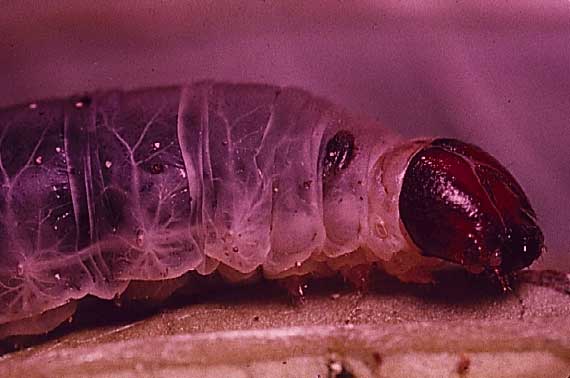Final Project Proposal: Caterpillar
Tarang Vaish & Shradha Budhiraja
 === Photograph we intend to Render ===
=== Photograph we intend to Render ===
 === A photograph showing the translucent and reflective properties of the caterpillar's skin.===
=== A photograph showing the translucent and reflective properties of the caterpillar's skin.===
Project Goal
We wish to model a catterpillar resting on a stem or a leaf. A caterpillar's body is covered with spiny bristles or long fine hairs. These are translucent and vary in their transparency and thickness. The skin of a caterpillar looks soft and slimy. It has long segmented translucent bodies which usually have band-like repeating patterns.
Motivation
Caterpillars come in varying colors and types from ugly-looking creepy insects to spectacularly vibrant creatures. They have an excellent property of camouflaging which often keeps them hidden in the surroundings. They usually just live for a few weeks before they turn into butterflies. A number of people have rendered butterflies in the past, exhibiting its beautiful wings and other irridiscent properties. But, we were spellbound by the images of caterpillars on the web and decided to render this beautiful aspect of nature.
On the technical side, we intend to add sub-surface scattering to PBRT.
Technical Challenges
1. Sub-Surface Scattering - As can be seen in the first image, the skin and the tenatcles/hair on the body of the caterpillar are translucent and slimy looking. We intend to simulate this effect using sub-surface scattering techniques. Following the paper on "A Practical Model for Subsurface Light Transport", (Jensen, Marschner, Levoy and Hanrahan) we intend to account for light transport between different locations on the surface. We also intend to simulate both the directional component (due to single scattering) as well as the diffuse component (due to multiple scattering).
2. To render the soft skin of the caterpillar, we intend to model a fur-like rendering technique with very low density of hair covering its body. We intend to base our approach on the algorithm described in "Rendering Fur With Three Dimensional Textures." (James T. Kajiya and Timothy L. Kay, SIGGRAPH, 89).
3. We also intend to render stem. This could be done by using fissure maps and bump maps on cylindrical models. The environment may consist of leaves and plants which could also be rendered using sub-surface scattering.
4. We intend to model the catterpillar using Maya.